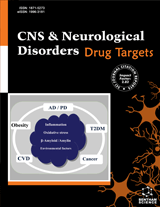Abstract
We reported previously that geniposide showed neurotrophic and neuroprotective activities with the activation of glucagons-like peptide 1 receptor (GLP-1R) in neurons. The current study was designed to further investigate the protective effect of geniposide on β-amyloid (Aβ)-induced cytotoxicity. Our results showed that pre-incubation with geniposide prevented Aβ1-42-induced cell injury in primary cultured cortical neurons. Geniposide also induced the expression of insulin-degrading enzyme (IDE), a major degrading protease of Aβ, in a dose-dependent manner. Moreover, bacitracin, an inhibitor of IDE, and RNAi on Glp-1r gene decreased the neuroprotection of geniposide in Aβ1-42-treated cortical neurons. Our findings indicated that geniposide activating GLP-1R to against Aβ-induced neurotoxicity involved in its regulation on the expression of IDE in cortical neurons, which provided an additional mechanistic insight into the role of GLP-1R in neuroprotection.
Keywords: Alzheimer’s disease (AD), β-amyloid (Aβ), glucagon-like peptide 1 receptor (GLP-1R), insulin-degrading enzyme (IDE), neuroprotection, neurotoxicity, cortical neurons, protease, endogenous, horseradish peroxidase.
CNS & Neurological Disorders - Drug Targets
Title:Geniposide Regulates Insulin-Degrading Enzyme Expression to Inhibit the Cytotoxicity of Aβ1-42 in Cortical Neurons
Volume: 11 Issue: 8
Author(s): Fei Yin, Yonglan Zhang, Lixia Guo, Shuzhen Kong and Jianhui Liu
Affiliation:
Keywords: Alzheimer’s disease (AD), β-amyloid (Aβ), glucagon-like peptide 1 receptor (GLP-1R), insulin-degrading enzyme (IDE), neuroprotection, neurotoxicity, cortical neurons, protease, endogenous, horseradish peroxidase.
Abstract: We reported previously that geniposide showed neurotrophic and neuroprotective activities with the activation of glucagons-like peptide 1 receptor (GLP-1R) in neurons. The current study was designed to further investigate the protective effect of geniposide on β-amyloid (Aβ)-induced cytotoxicity. Our results showed that pre-incubation with geniposide prevented Aβ1-42-induced cell injury in primary cultured cortical neurons. Geniposide also induced the expression of insulin-degrading enzyme (IDE), a major degrading protease of Aβ, in a dose-dependent manner. Moreover, bacitracin, an inhibitor of IDE, and RNAi on Glp-1r gene decreased the neuroprotection of geniposide in Aβ1-42-treated cortical neurons. Our findings indicated that geniposide activating GLP-1R to against Aβ-induced neurotoxicity involved in its regulation on the expression of IDE in cortical neurons, which provided an additional mechanistic insight into the role of GLP-1R in neuroprotection.
Export Options
About this article
Cite this article as:
Yin Fei, Zhang Yonglan, Guo Lixia, Kong Shuzhen and Liu Jianhui, Geniposide Regulates Insulin-Degrading Enzyme Expression to Inhibit the Cytotoxicity of Aβ1-42 in Cortical Neurons, CNS & Neurological Disorders - Drug Targets 2012; 11 (8) . https://dx.doi.org/10.2174/1871527311211080015
| DOI https://dx.doi.org/10.2174/1871527311211080015 |
Print ISSN 1871-5273 |
| Publisher Name Bentham Science Publisher |
Online ISSN 1996-3181 |
 19
19
- Author Guidelines
- Bentham Author Support Services (BASS)
- Graphical Abstracts
- Fabricating and Stating False Information
- Research Misconduct
- Post Publication Discussions and Corrections
- Publishing Ethics and Rectitude
- Increase Visibility of Your Article
- Archiving Policies
- Peer Review Workflow
- Order Your Article Before Print
- Promote Your Article
- Manuscript Transfer Facility
- Editorial Policies
- Allegations from Whistleblowers
Related Articles
-
Targeting of Cancer-Related Proteins with PNA Oligomers
Current Cancer Drug Targets α-Glucosidase Inhibitory Activity of the Extracts and Major Phytochemical Components of Smilax glabra Roxb
The Natural Products Journal Lymphocytes in Alzheimer’s Disease Pathology: Altered Signaling Pathways
Current Alzheimer Research Ectodomain Shedding and Regulated Intracellular Proteolysis in the Central Nervous System
Central Nervous System Agents in Medicinal Chemistry Depression as an Immunometabolic Disorder: Exploring Shared Pharmacotherapeutics with Cardiovascular Disease
Current Neuropharmacology Metabolomics Reveals Hyperlipidemic Biomarkers and Antihyperlipidemic Effect of Poria cocos
Current Metabolomics Personalized Medicine: Pharmacogenetics in Psychiatry
Current Pharmacogenomics and Personalized Medicine Light-at-Night-Induced Circadian Disruption, Cancer and Aging
Current Aging Science Biomarkers of Diabetic Nephropathy, the Present and the Future
Current Diabetes Reviews Autoimmune Hepatitis
Current Pediatric Reviews Freeze-Drying of Protein-Loaded Nanoparticles for Vaccine Delivery
Drug Delivery Letters Implication of Green Tea as a Possible Therapeutic Approach for Parkinson Disease
CNS & Neurological Disorders - Drug Targets Psychotropics and Methadone in Acquired Long QT Syndrome
Current Psychopharmacology The Role of Platelets and their Microparticles in Rehabilitation of Ischemic Brain Tissue
CNS & Neurological Disorders - Drug Targets Adult and Embryonic Stem Cells in Cartilage Repair
Current Rheumatology Reviews The Importance of Strict Blood Glucose Control with Insulin Therapy in the Intensive Care Unit
Current Diabetes Reviews GLP - 1 Analogs: Newer Molecules, Newer Uses
Recent Patents on Endocrine, Metabolic & Immune Drug Discovery (Discontinued) EP2300 Compounds: Focusing on the Antiatherosclerotic Properties of Squalene Synthase Inhibitors
Current Pharmaceutical Design The Influence of Tetracycline Inducible Targeting Rat PPARγ Gene Silencing on the Osteogenic and Adipogenic Differentiation of Bone Marrow Stromal Cells
Current Pharmaceutical Design Metformin: A Growing Journey from Glycemic Control to the Treatment of Alzheimer’s Disease and Depression
Current Medicinal Chemistry


























